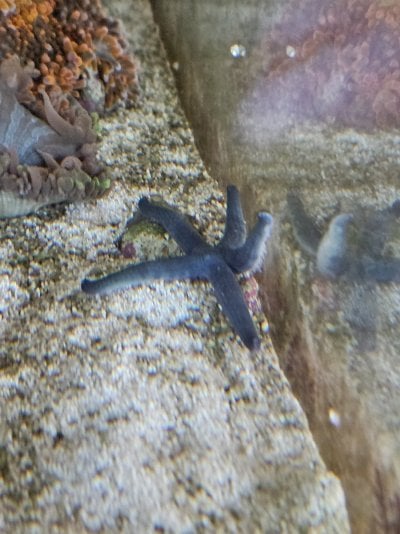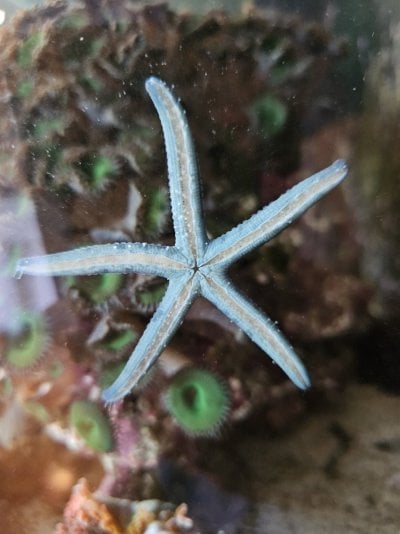Navigation
Install the app
How to install the app on iOS
Follow along with the video below to see how to install our site as a web app on your home screen.
Note: This feature may not be available in some browsers.
More options
You are using an out of date browser. It may not display this or other websites correctly.
You should upgrade or use an alternative browser.
You should upgrade or use an alternative browser.
Hitchhiker Starfish ID?
- Thread starter LgTas
- Start date
- Tagged users None
Yeah, looks like a Blue Linckia, Linckia laevigata. How large is it now, and have you been feeding it anything? (I'm assuming no on the feeding, but figured I'd check).
These usually don't do well in our tanks, so I'd expect it get harder to keep the larger it gets due to its food requirements.
That said, here are some ways you can try and gauge how healthy it is:
These usually don't do well in our tanks, so I'd expect it get harder to keep the larger it gets due to its food requirements.
That said, here are some ways you can try and gauge how healthy it is:
Some ways to potentially gauge the health of the starfish that may be useful:
1 - Visual: is anything visually wrong with the specimen? (From what I know of starfish, these cues are generally pretty obvious if they're there at all - if the starfish is disintegrating, there's something wrong).
2 - Weight: is the specimen putting on or maintaining weight (generally healthy), or is it losing weight (under most circumstances, this would be unhealthy)?
3 - Size/Length: if it's not already full size, is the specimen growing? Is it shrinking (either from weight loss, disease, limb loss, etc.)?
4 - Reproduction: is the specimen engaging in reproductive behaviors/activities (i.e. courting, nesting, spawning, etc.)? (I recognize this one is not as common of an indicator in captive starfish at this point, but there are a few instances of starfish attempting to spawn in captivity).
5 - Longevity: is the specimen relatively close to meeting, actually meeting, or exceeding their expected wild lifespan (or at least surviving for a few years - healthy), or is the specimen dead/dying prior to doing so (unhealthy)?
6 - Speed: how quickly can the specimen right itself when it's flipped over?
7 - Level of activity: how much is the specimen moving around? (Generally speaking, low activity indicates poor health; moderate activity indicates good health; and high activity indicates good health but probable stress - it could be searching for food, oxygen, etc., but it's probably not in terrible health when moving a lot).
8 - Grip strength: does the specimen have a strong hold/grip with its tube feet? (A strong grip indicates good health, a weak grip indicates poor health).
9 - Willingness to eat: is the specimen eating? (Seems obvious, but can be really hard to tell with some stars - some stars leave little trails called feeding scars through the things they're eating; sometimes you can see their everted stomachs; other times, like if they're feeding on biofilm, you may not be able to tell at all - them crawling onto visible food is a good sign they're willing to eat, but - as mentioned above - the food may or may not meet their nutritional needs).


















